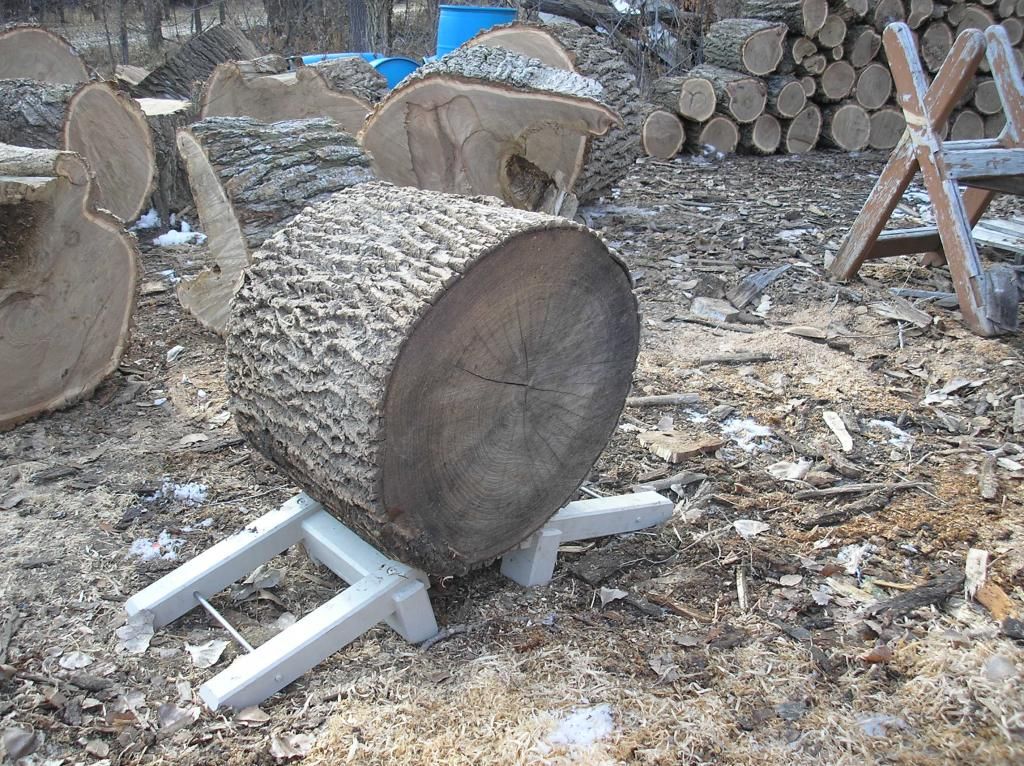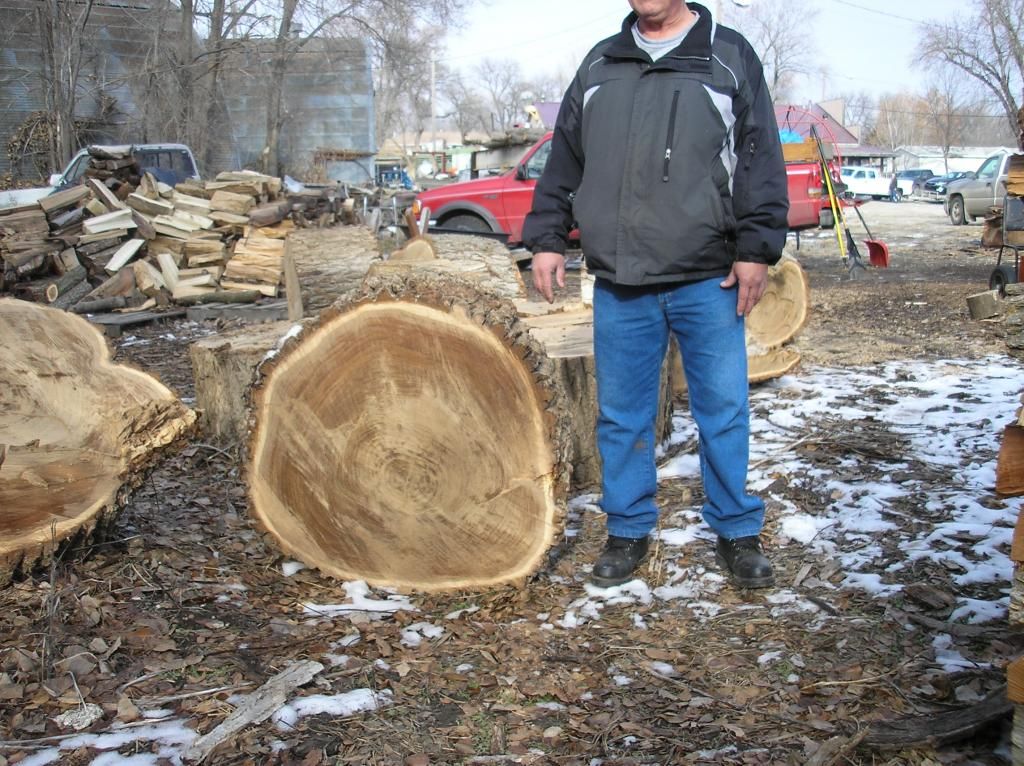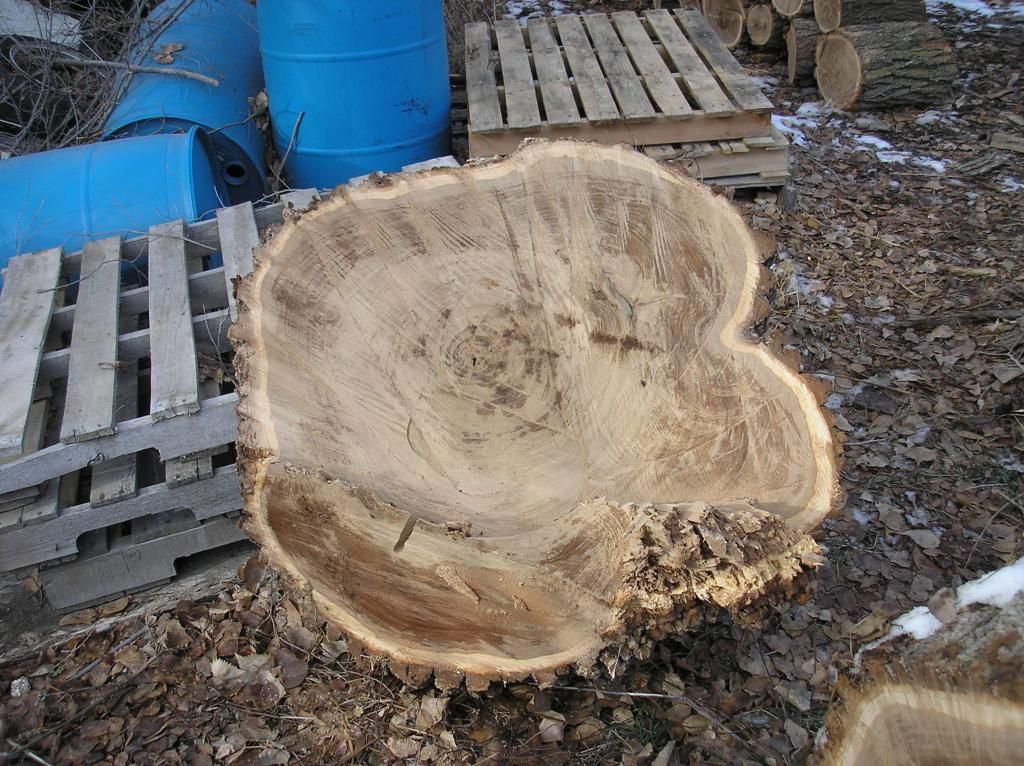Well an elm tree was removed that was threatening a farmhouse and the tree cutter dropped all the logs off at my place. He thought it was a huge Chinese elm tree, but I have some doubts. First of all, I always thought they are rarely more than 50' tall and usually only live at most 50 years before they die. That means the trunks would usually run 3' dia. or less.
The tree cutter bucked almost all the logs to firewood length (16" to 18") for me, and the largest rounds are over 4' across (I kid you not). This tree was huge. I'll have to noodle cut at least 8 of them into quarters or sixths and several more in half in order to split them. When he unloaded the hydraulic trailer, a few of the larger ones landed flat. Two men together cannot flip them onto their sides for noodling. Lacking a truck picker, a tractor, or a hoist, I imagine we will have to use 8' levers and a fulcrum to eventually place them in "wheel" position for noodling. I estimate a few at 500 lb rounds in 16" lengths. He told me that it was all that his Stihl MS460 with a 32" bar could do to buck them up.
The bark is rough and nearly two inches thick at the trunk. I have to wonder if this was really a Chinese elm tree. I'll take some Pics, but based on this description WDYT? Also, lacking a tractor or any heavy equipment, any ideas on the easiest way to stand these up in wheel position?
The tree cutter bucked almost all the logs to firewood length (16" to 18") for me, and the largest rounds are over 4' across (I kid you not). This tree was huge. I'll have to noodle cut at least 8 of them into quarters or sixths and several more in half in order to split them. When he unloaded the hydraulic trailer, a few of the larger ones landed flat. Two men together cannot flip them onto their sides for noodling. Lacking a truck picker, a tractor, or a hoist, I imagine we will have to use 8' levers and a fulcrum to eventually place them in "wheel" position for noodling. I estimate a few at 500 lb rounds in 16" lengths. He told me that it was all that his Stihl MS460 with a 32" bar could do to buck them up.
The bark is rough and nearly two inches thick at the trunk. I have to wonder if this was really a Chinese elm tree. I'll take some Pics, but based on this description WDYT? Also, lacking a tractor or any heavy equipment, any ideas on the easiest way to stand these up in wheel position?











